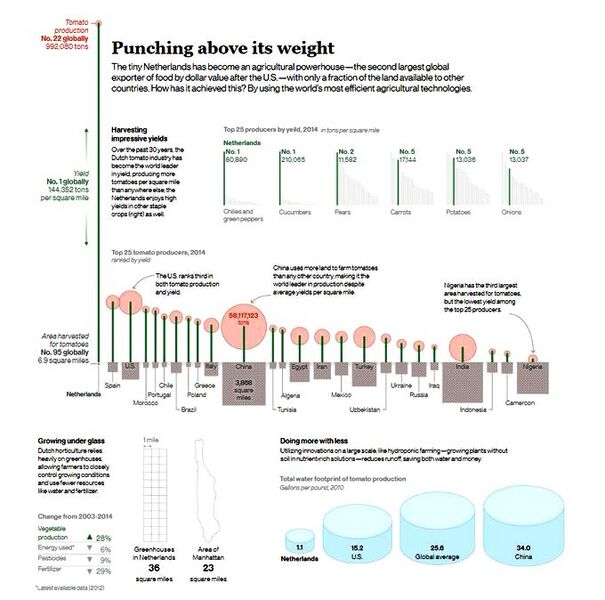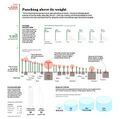File:Netherlands agriculture - Outstanding results globally.jpg

Original file (680 × 674 pixels, file size: 77 KB, MIME type: image/jpeg)
The Netherlands: This tiny country feeds the world
- Agricultural giant Holland is changing the way we farm
National Geographic / 2017
Almost two decades ago, the Dutch made a national commitment to sustainable agriculture under the rallying cry “Twice as much food using half as many resources.” Since 2000, van den Borne and many of his fellow farmers have reduced dependence on water for key crops by as much as 90 percent. They’ve almost completely eliminated the use of chemical pesticides on plants in greenhouses, and since 2009 Dutch poultry and livestock producers have cut their use of antibiotics by as much as 60 percent.
One more reason to marvel: The Netherlands is a small, densely populated country, with more than 1,300 inhabitants per square mile. It’s bereft of almost every resource long thought to be necessary for large-scale agriculture. Yet it’s the globe’s number two exporter of food as measured by value, second only to the United States, which has 270 times its landmass.
How on Earth have the Dutch done it?
In the country’s principal farming regions, there’s almost no potato patch, no greenhouse, no hog barn that’s out of sight of skyscrapers, manufacturing plants, or urban sprawl. More than half the nation’s land area is used for agriculture and horticulture.
Banks of what appear to be gargantuan mirrors stretch across the countryside, glinting when the sun shines and glowing with eerie interior light when night falls. They are Holland’s extraordinary green-house complexes, some of them covering 175 acres. These climate-controlled farms enable a country located a scant thousand miles from the Arctic Circle to be a global leader in exports of a fair-weather fruit: the tomato. The Dutch are also the world’s top exporter of potatoes and onions and the second largest exporter of vegetables overall in terms of value. More than a third of all global trade in vegetable seeds originates in the Netherlands.
The Brain Trust behind these astounding numbers is centered at Wageningen University & Research (WUR), located 50 miles southeast of Amsterdam. Widely regarded as the world’s top agricultural research institution, WUR is the nodal point of Food Valley, an expansive cluster of agricultural technology start-ups and experimental farms...
By 2050, the Earth will be home to as many as 10 billion people, up from today’s 7.5 billion. If massive increases in agricultural yield are not achieved,
matched by massive decreases in the use of water and fossil fuels, a billion or more people may face starvation. Hunger could be the 21st century’s most urgent problem...
Spreading the word, feeding the world
Wageningen University & Research is key to the Netherlands’ agricultural success. The university is also exporting their innovative approach around the globe.
In the Netherlands, the future of sustainable agriculture is taking shape — not in the boardrooms of big corporations, but on thousands of modest family farms.
🌎
File history
Click on a date/time to view the file as it appeared at that time.
| Date/Time | Thumbnail | Dimensions | User | Comment | |
|---|---|---|---|---|---|
| current | 18:56, 17 September 2023 |  | 680 × 674 (77 KB) | Siterunner (talk | contribs) |
You cannot overwrite this file.
File usage
The following page uses this file:
- Alternative Agriculture
- Agriculture
- Biodiversity
- Biogeosciences
- Bioneers
- Earth Law
- Earth Observations
- Earth Science
- Eco-nomics
- Ecology Studies
- Education
- Environmental Full-cost Accounting
- Environmental Security, National Security
- EOS eco Operating System
- Externalities
- Farm-Related Policies
- Food
- Food-Related Policies
- Green Best Practices
- Green Politics
- Health
- Land Ethic
- Natural Capital
- Netherlands
- Organic Food
- Permaculture
- Planet Citizen
- Planet Citizens
- Planet Citizens, Planet Scientists
- Resilience
- Soil
- Sustainability
- Sustainability Policies
- Urban Gardening
- Water
- Water Saving